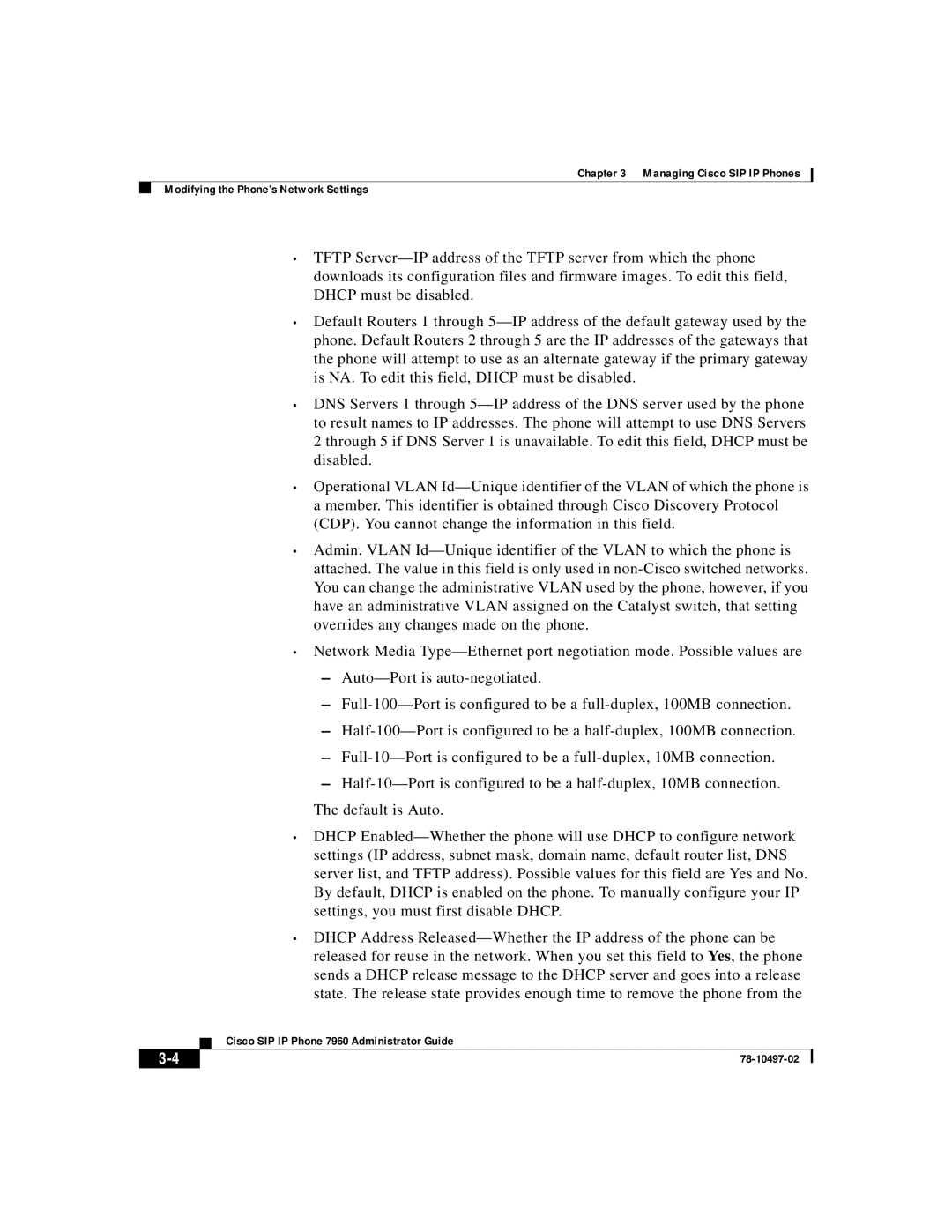Chapter 3 Managing Cisco SIP IP Phones
Modifying the Phone’s Network Settings
•TFTP Server—IP address of the TFTP server from which the phone downloads its configuration files and firmware images. To edit this field, DHCP must be disabled.
•Default Routers 1 through 5—IP address of the default gateway used by the phone. Default Routers 2 through 5 are the IP addresses of the gateways that the phone will attempt to use as an alternate gateway if the primary gateway is NA. To edit this field, DHCP must be disabled.
•DNS Servers 1 through 5—IP address of the DNS server used by the phone to result names to IP addresses. The phone will attempt to use DNS Servers 2 through 5 if DNS Server 1 is unavailable. To edit this field, DHCP must be disabled.
•Operational VLAN Id—Unique identifier of the VLAN of which the phone is a member. This identifier is obtained through Cisco Discovery Protocol (CDP). You cannot change the information in this field.
•Admin. VLAN Id—Unique identifier of the VLAN to which the phone is attached. The value in this field is only used in non-Cisco switched networks. You can change the administrative VLAN used by the phone, however, if you have an administrative VLAN assigned on the Catalyst switch, that setting overrides any changes made on the phone.
•Network Media Type—Ethernet port negotiation mode. Possible values are
–Auto—Port is auto-negotiated.
–Full-100—Port is configured to be a full-duplex, 100MB connection.
–Half-100—Port is configured to be a half-duplex, 100MB connection.
–Full-10—Port is configured to be a full-duplex, 10MB connection.
–Half-10—Port is configured to be a half-duplex, 10MB connection.
The default is Auto.
•DHCP Enabled—Whether the phone will use DHCP to configure network settings (IP address, subnet mask, domain name, default router list, DNS server list, and TFTP address). Possible values for this field are Yes and No. By default, DHCP is enabled on the phone. To manually configure your IP settings, you must first disable DHCP.
•DHCP Address Released—Whether the IP address of the phone can be released for reuse in the network. When you set this field to Yes, the phone sends a DHCP release message to the DHCP server and goes into a release state. The release state provides enough time to remove the phone from the
| Cisco SIP IP Phone 7960 Administrator Guide |
3-4 | 78-10497-02 |

